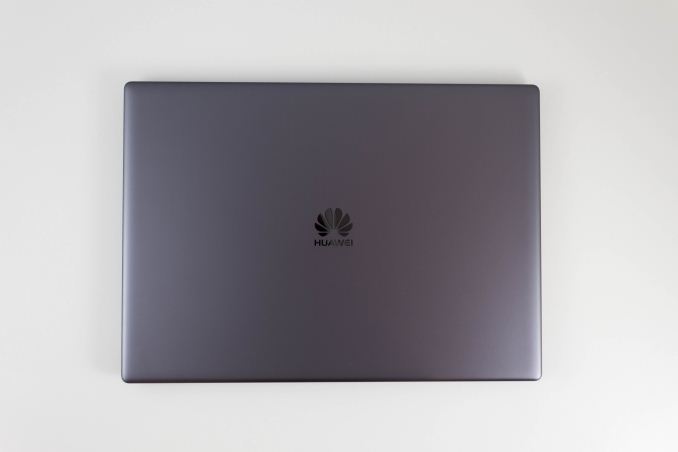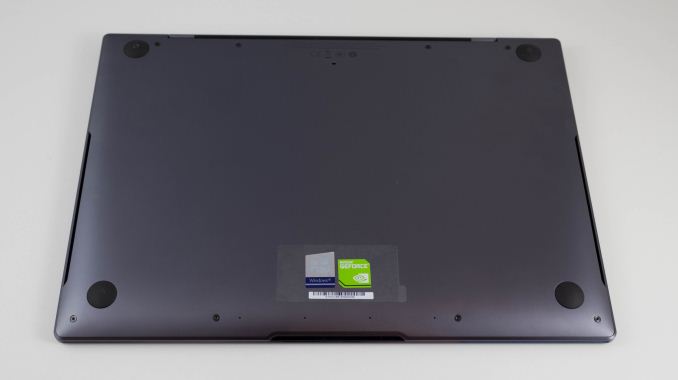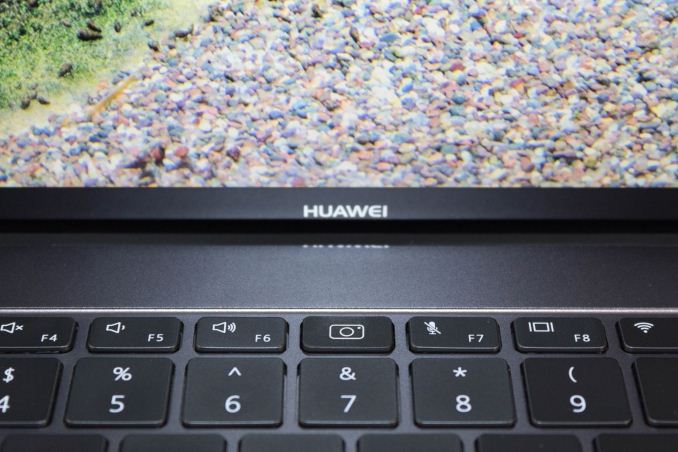The Huawei MateBook X Pro Review: Calling Out The Competition
by Brett Howse on June 27, 2018 8:00 AM ESTFinal Words
What’s perhaps most surprising about the Huawei MateBook X Pro is that the company is a fairly new entrant to the PC market, but they’ve delivered one of the best Ultrabooks you can buy in only a couple of iterations. There’s a lot of good, very little bad, and Huawei is practically sitting on an island when you talk about value.
The company seems to be unabashed about where they’ve gotten their design inspiration from for the MateBook X Pro, but despite it having a distinct MacBook Pro look to it, Huawei has delivered their own take, with amazingly thin bezels on this 3:2 display. They’ve incorporated the fingerprint reader into the power button, but there’s still an actual row of function keys too. From a design standpoint, the Huawei MateBook X Pro is one of the nicest looking Ultrabooks you can buy.
Huawei also stepped into the future with both USB-C and Thunderbolt 3, but also kept a USB-A port as well for those of us with legacy devices, which is almost everyone. It’s expansion done right. There’s no loss of device thinness either by including the USB-A port, and it sure makes life easier when you want to do almost anything. USB-C is the future, but that doesn’t mean you need to ignore the present. And for those that are still solidly in the present, Huawei ships the MateBook X Pro with a USB-C dongle with USB-A, HDMI, and somewhat strangely, a VGA connector, and even another USB-C port so you don't even lose the original port. That's a nice touch.
Huawei has delivered a good keyboard as well, despite the limited amount of key travel. They’ve done a great job on the switch resistance to make it feel like a solid keystroke. The oversized trackpad is not so oversized as to make it too easy to accidentally bump it, and it is one of the smoothest trackpads we’ve ever seen on a PC.
There’s plenty of performance as well, with the same CPU performance you’d expect in a current generation Ultrabook featuring Intel’s 8th generation U series processors, but Huawei has also added in a discrete NVIDIA GeForce MX150 GPU with 2 GB of GDDR5. It’s not a gaming system by any means, but the extra grunt from the MX150 does allow you to perform tasks that would bring the integrated UHD 620 GPU to its knees, and the combination of MX150 and Core i7-8550U outperform the Ryzen 7 2700U thanks to the CPU not sharing a TDP with the GPU.
Huawei is also one of the few PC makers to truly deliver an excellent display. The 3000x2000 resolution panel is crisp, and offers one of the highest brightness levels we’ve seen, but also some of the best contrast. The display accuracy isn’t quite class leading, but it’s close, and far better than pretty much any PC OEM other than Microsoft.
The only major complaint is the webcam placement, which is hidden under a fake function key, but depending on your needs, this could not be a real issue at all, and the ability to hide the webcam is certainly a privacy benefit. Ian has been using the MateBook X Pro as well and his experience hasn’t been as positive, with some issues with hesitation that he’s not had a chance to dig into, and he’s used the MateBook X from last year as well and prefers it to the new Pro.
With all of these features, you’d expect the MateBook X Pro to be competitively priced against a Dell XPS 13 or Microsoft Surface Pro, but that’s the real kicker. The Huawei MateBook X Pro is priced hundreds of dollars less than most of the competition, while providing a superior product to most. The value here is undeniable, even though it’s hard to think of a $1500 laptop as a value product. The base model with a Core i5-8250U, 8 GB of RAM, and a 256 GB SSD is just $1200, but unlike most laptops, the higher end model is an even better deal. For just $300 more, you bump the CPU up to a Core i7-8550U, double the RAM to 16 GB, double the SSD to 512 GB, and add in the GeForce MX150 GPU. That’s an impressive upgrade for not much more money.
Other PC makers need to stand up and take notice. The MateBook X Pro has arrived.













77 Comments
View All Comments
Brett Howse - Thursday, July 5, 2018 - link
It does have Touch support. Sorry I meant to have that listed in the spec table. I've added it now.dr.denton - Wednesday, July 11, 2018 - link
Did I just miss it, or was there no mention of the inherent differences between a fully integrated APU and a CPU+GPU+dedicated graphics memory? To be honest, I don't find it particularly impressive to outperform a 15W R7 with a setup that surely is allowed more power budget, has more memory bandwidth and, I assume, is more expensive to manufacture.s.yu - Saturday, July 21, 2018 - link
Yup, this review is fairly disappointing, it's not as detailed as Notebookcheck's. Sometimes Anandtech does a better job but not this time.s.yu - Saturday, July 21, 2018 - link
This feels like an ad, why on earth is the base model's $1500 "undeniable value", as an ultrabook there's hardly anything of note besides the screen's brightness and resolution(sRGB coverage is basically standard for any ultrabook other than the cheapest, touch is also pretty common). The SSD is triple sourced and you can bet on the other variants to be slower, this speed is typically only seen in mid-high tier Samsungs, I've never seen Toshibas reach this speed for example. The thunderbolt is only two lanes, old problem, while Dell is already moving to fix that. Overall lack of ports for what's supposed to be a more pro-oriented model (they added the MX150, if only the slow version). No Windows hello? Xiaomi's new notebook among others are priced much more competitively for the specs.And the design is really mediocre, the up and down arrow keys for example should be full size, or the left and right should be half sized, as of now the pressure points of the side keys and the down key aren't in a straight line, I've tried such a keyboard before and was very annoyed by the differently sized arrow keys. The webcam placement is downplayed but its angle is even worse than the XPS solution, because it's closer to the user, also because it would be completely unusable on a stand/base commonly used to increase the number of ports and/or improve typing and screen-viewing comfort. From an aesthetic point of view it's also mediocre, choosing a somewhat dated roundish Macbook design (the recent design trend goes bolder, not only the Macbooks but also new XPSs and the new Blade follow this trend, even Xiaomi) and slapping a Huawei logo onto it.
RaymondIT - Tuesday, July 24, 2018 - link
I still don't see why a higher end system like this is using slower memory that takes more power. LPDDR4 or even DDR4 would be a better choice. LPDDR4 uses 40% less power??Joiiyrancher - Monday, October 8, 2018 - link
Did you guys ever look into the reports that the thunderbolt 3 ports only provided 2 Lane support and therefore significantly compromised eGPU p performance? I think notebookcheck wrote about it. If that isn't the case I would buy one today.